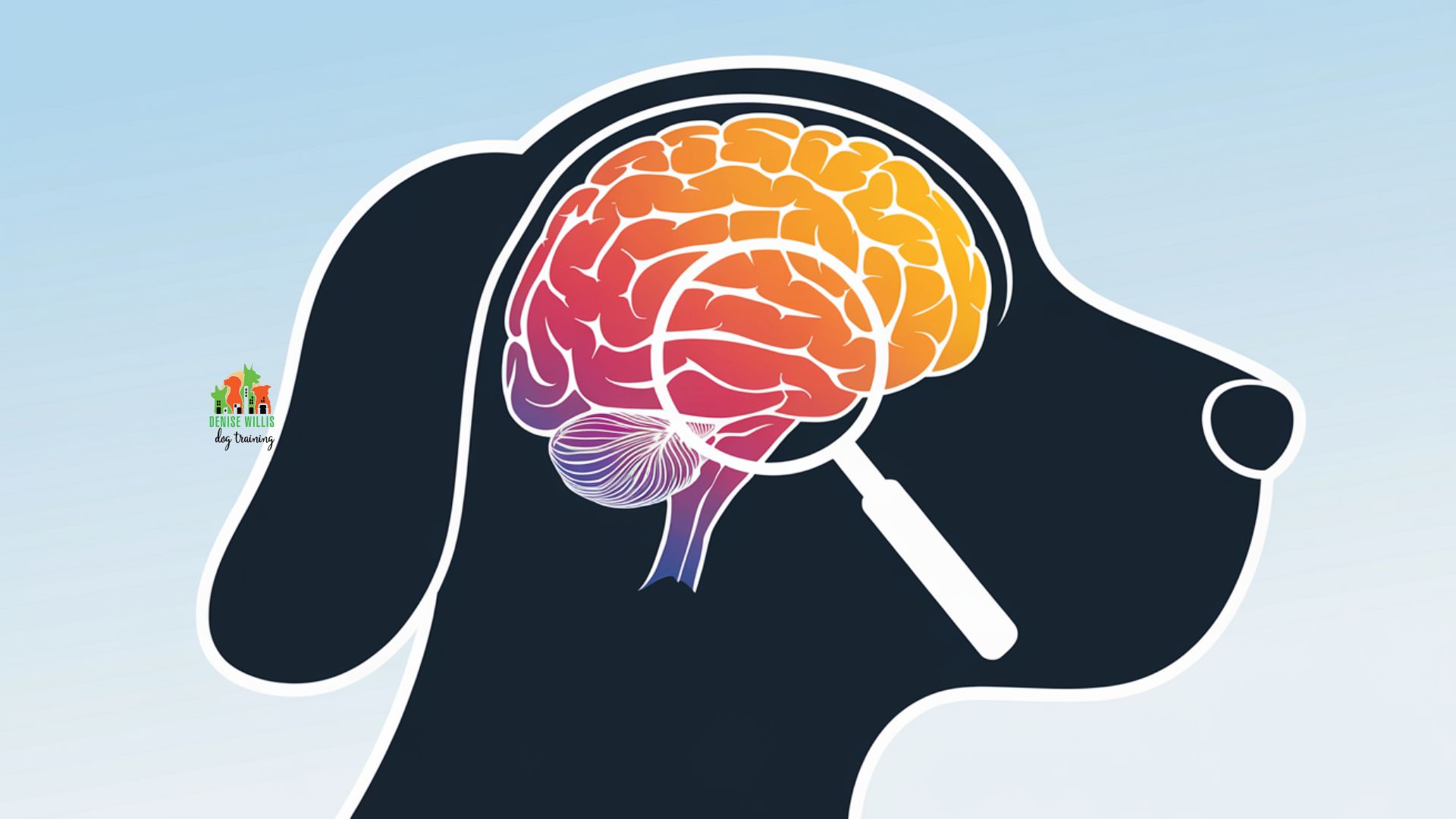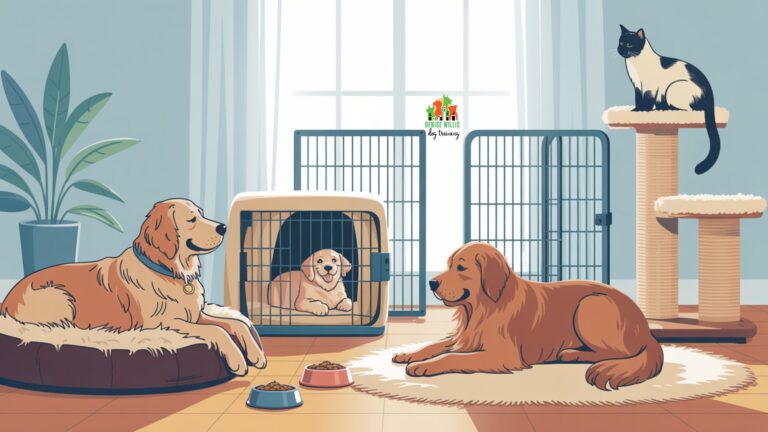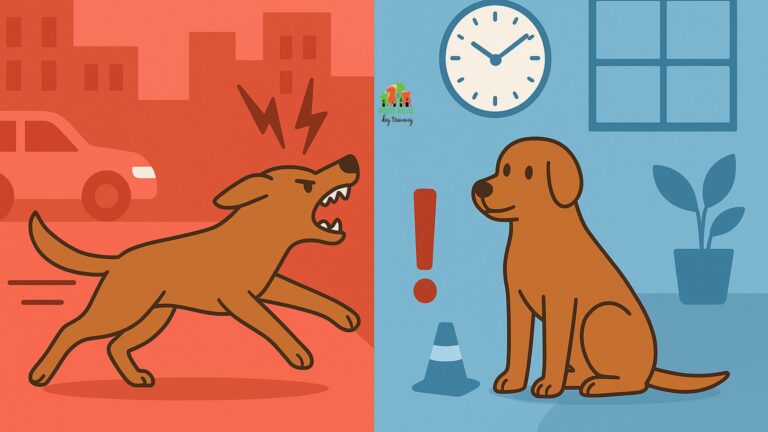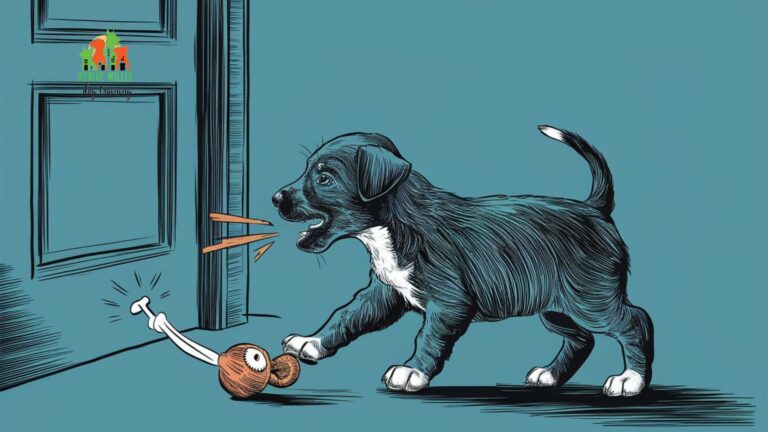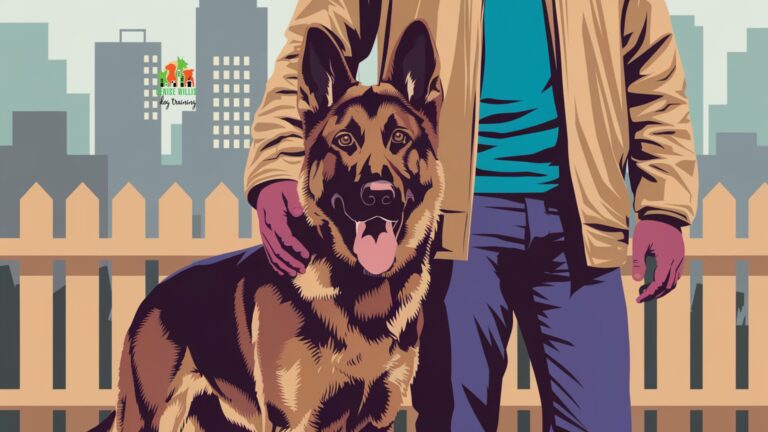Healing Hearts and Paws: Addressing Trauma-Induced Dog Aggression
📍 Service Area Notice: DW Dog Training provides in-person training services exclusively in the Greater Baltimore area. While our blog content is designed to help dog owners internationally, our hands-on training services are locally focused. For readers outside our service area, we hope you find value in our articles and welcome you to reach out with questions!
Has your lovable pup’s sudden aggressive behavior left you feeling helpless and confused? Trauma-induced aggression transforms countless sweet-natured dogs into defensive warriors, but there’s more to their story than meets the eye.
That growl isn’t attitude.
It’s your dog’s desperate attempt to process past experiences they can’t put into words. According to recent studies from the American Working Dog Federation, this complex behavioral challenge affects nearly 40% of rescued dogs, making it one of the most significant hurdles in canine rehabilitation. Behind each defensive display lies a brain rewired by survival instincts, not a “bad dog” choosing to misbehave.
The good news?
Understanding the science of canine trauma can transform your perspective and your dog’s life. Your pup’s journey back to confidence starts with recognizing that their aggression isn’t personal; it’s their way of telling a story they need you to hear.
Key Takeaways
Before we dive deep into the world of canine trauma, let’s highlight what you need to know:
- Trauma-induced aggression isn’t just bad behavior. It’s rooted in measurable brain changes that affect how dogs process their environment, according to groundbreaking research from veterinary behaviorists
- Your dog’s aggressive responses might look random, but they’re actually predictable patterns triggered by past experiences
- Professional support can make a world of difference. Studies show that 78% of dogs show significant improvement with proper intervention
- Recovery is possible, but it requires patience, understanding, and the right approach
- Creating a safe environment is crucial – both for your dog and everyone around them
The Science Behind Canine Trauma
Remember that time you jumped at a car backfiring because it reminded you of something startling?
Your dog’s trauma responses work similarly, but with the volume turned up to eleven.
Understanding how trauma affects our furry friends means diving into some fascinating science that explains why your otherwise lovable pooch might suddenly transform into Cujo when the delivery person appears.
Recent neurobiological research has shown that traumatic experiences literally rewire a dog’s brain, creating new neural pathways that prioritize survival over sociability.
Understanding the Brain-Behavior Connection
When trauma occurs, it’s like someone installing a hypersensitive security system in your dog’s brain. Studies from veterinary behaviorists have identified three key changes:
- The amygdala (your dog’s emotional alarm system) becomes hyperactive, setting off false alarms at the slightest trigger
- The hippocampus, responsible for processing memories and context, shows reduced function, making it harder for dogs to distinguish between real and perceived threats
- Stress hormone production goes into overdrive, keeping your dog in a constant state of fight-or-flight
Think of it like a smoke detector that goes off when you’re just cooking dinner. It’s annoying for us, but potentially life-saving from the detector’s perspective. Your dog’s brain is doing exactly what it thinks it needs to do to keep them safe, even if we know they’re not actually in danger.
When Fight or Flight Gets Stuck
Here’s where things get interesting – and by interesting, I mean challenging for everyone involved. Research published in Veterinary Medicine International shows that traumatized dogs can get stuck in a constant state of high alert. It’s like they’re perpetually waiting for the other shoe to drop, except in their world, shoes are dropping everywhere, all the time.
This heightened state isn’t just uncomfortable.
It’s exhausting.
Imagine being startled by every car horn, every doorbell, every friendly neighbor waving hello. That’s the reality for dogs dealing with trauma-induced aggression. Their bodies are constantly pumping out stress hormones, their muscles stay tense, and their nervous system remains on high alert, ready to defend against threats both real and imagined.
Scientists have discovered that this constant state of arousal can actually change how a dog’s brain processes information. Normal, everyday events that wouldn’t faze most dogs become potential threats, leading to what looks like “aggressive” behavior but is actually a desperate attempt to create safety and distance from perceived dangers.
Trauma and Aggression: The Numbers That Tell Your Dog’s Story
Ever wondered why your sweet, tail-wagging companion suddenly transforms into a canine superhero at the sight of a harmless garden gnome? Turns out, there’s some fascinating science behind those dramatic reactions. Spoiler alert: your dog isn’t auditioning for a role in “Law & Order: Special Barking Unit” – they’re actually telling us something important about their past experiences.
Quick Pro Tip: When tracking your dog’s reactive moments, remember you’re not just collecting data, you’re decoding their secret language. And unlike learning French, this one comes with tail wags and treat rewards!
| Behavior Pattern | Percentage | What It Means For Your Dog | Source |
|---|---|---|---|
| Defensive Aggression | 53.8% | More than half of aggressive responses are actually fear-based defense mechanisms | [Research Study] |
| Hyperarousal Signs | 98.5% | Almost all trauma-affected dogs show heightened alertness and startle responses | [Expert Analysis] |
| Treatment Success | 89% | Dogs show significant improvement with consistent professional guidance and owner commitment | [Clinical Data] |
| Early Warning Signs | 47% | Of severe incidents occur when subtle warning signals are missed | [Behavioral Study] |
| Recovery Timeline | 78% | Success rate with proper desensitization protocols in the first 3-6 months | [Clinical Research] |
Surprising, isn’t it?
Behind these numbers are countless dogs who’ve traded their fear-based reactions for tail wags and trust. That impressive 89% success rate isn’t just a statistic. It’s proof that with the right support, patience, and probably enough treats to fill a small warehouse, positive change is possible.
Remember, when your dog reacts defensively, they’re not being stubborn or difficult. They’re actually showing remarkable honesty about their emotional state. And with nearly 80% of dogs showing improvement within months, there’s plenty of reason to wag your own tail with hope. After all, every great comeback story starts with understanding the challenge ahead.
Quick Pro Tip: Start celebrating the tiny victories – like that time your dog only side-eyed the mailman instead of practicing their opera singing. Progress doesn’t always wear a cape, but it’s still super!
Recognizing the Signs
You know that friend who claims they’re “fine” while aggressively stabbing their salad?
Dogs are actually more honest about their feelings if you know what to look for. Understanding your dog’s body language isn’t just about preventing bites; it’s about hearing what they’ve been trying to tell us all along.
Body Language Tells the Story
If dogs could talk, they’d probably say something like, “I’ve been giving you signals for hours, human!” According to veterinary behaviorists, trauma-induced aggression rarely comes out of nowhere. Think of it as your dog’s version of a PowerPoint presentation on their emotional state, complete with visual aids:
- The “I’m Not Okay” Basics: Muscle tension, whale eye (showing whites of the eyes), and low tail carriage
- The “Please Give Me Space” Signals: Turning away, lip licking, and excessive yawning
- The “I Mean Business” Warnings: Growling, showing teeth, and raised hackles
Research shows that dogs typically give an average of five to seven different warning signals before resorting to aggressive behavior. It’s like they’re climbing a ladder of communication, desperately hoping we’ll notice before they reach the top.
Common Triggers and Patterns
Remember playing “Hot and Cold” as a kid?
Understanding your dog’s triggers works similarly, except the stakes are slightly higher than finding hidden candy. Studies from animal behavior specialists have identified several common trigger patterns:
- Environmental Triggers: Specific sounds, sudden movements, or even certain smells can activate trauma responses
- Social Situations: Particular types of people, other dogs, or specific interactions might spell trouble
- Resource-Related Scenarios: Food, toys, or space can become heightened areas of concern
The key is creating a “trigger map” – a mental (or actual) chart of what sets your dog off and under what circumstances. Think of it as your dog’s personal weather forecast: “High chance of anxiety with scattered episodes of reactivity when the neighbor’s kids play basketball.”
The Path to Healing
Let’s be real.
Helping a traumatized dog is less like following a GPS and more like navigating by stars while riding a unicycle. But don’t worry, science and experience have given us some pretty solid directions.
Creating Safe Spaces
Ever walked into a spa and felt your shoulders immediately drop away from your ears?
That’s what we’re aiming for with your dog’s environment. Research indicates that creating predictable, controlled spaces can reduce aggressive incidents by up to 60%.
The magic formula includes:
- A designated “chill zone” where your dog can retreat when feeling overwhelmed
- Consistent daily routines that help your dog feel in control
- Environmental management that minimizes exposure to known triggers
- Positive associations with previously scary situations
Think of it as creating your dog’s personal zen garden, minus the tiny rake (unless they’re into that sort of thing).
Professional Support and Guidance
Here’s a truth bomb.
While love is essential, it’s not always enough. Studies show that professional intervention can increase success rates in rehabilitation by up to 80%. Sometimes, you need a whole team of cheerleaders, including:
- A qualified behavioral veterinarian who can assess medical components
- A certified dog trainer with experience in trauma cases
- Possibly a veterinary behaviorist for medication support when needed
It’s like having a personal coaching staff for your dog’s emotional comeback tour.
Making Sense of the Numbers: A Visual Guide
Remember when you tried to explain to your non-dog-person friend why your pup barks at that one specific fire hydrant but ignores all the others?
Yeah, trauma responses in dogs can be just as tricky to explain. Let’s break down these important numbers into bite-sized pieces (pun absolutely intended) that show what’s really going on in your four-legged friend’s mind.
Understanding Trauma Responses in Dogs
Defensive Reactions
53.8% of aggressive behaviors are actually fear-based defense mechanisms, not “bad dog” behavior.
Warning Signs
47% of severe incidents happen when subtle signals like whale eye and lip-licking are missed.
Recovery Success
89% of dogs show significant improvement with professional guidance and consistent training.
Healing Timeline
78% success rate in the first 3-6 months with proper desensitization protocols.
Still with us after that statistical treat? (And no, we can’t reward you with bacon, but here’s a virtual belly rub for making it through!) These visual snapshots tell us something incredibly important: your dog’s behavior isn’t random, and neither is their path to recovery. That 89% success rate isn’t just a number – it’s countless tail wags, peaceful walks, and restored trust between dogs and their humans.
Rehabilitation Success Stories
If you’re thinking “That’s all great, but does it actually work?” – grab a tissue, because these tales of transformation might make you a bit misty-eyed. While every dog’s journey is unique, the power of patience, understanding, and proper support can work wonders.
Case Studies in Hope
Ever wondered what healing actually looks like for a traumatized dog?
Meet Luna, a German Shepherd who once thought the world was out to get her (spoiler alert: it wasn’t). According to documented case studies, dogs with trauma-induced aggression often follow a surprisingly predictable path to recover. Think of it as your pup’s personal hero’s journey, minus the cape and theme music.
Quick Pro Tip: Recovery isn’t a straight line, but it does have milestones worth celebrating!
The Transformation Timeline:
- Week 1-4: Baby steps and breakthrough moments as your dog discovers their safe space (and that humans aren’t actually aliens in disguise)
- Month 2-3: The “aha!” phase where your pup starts distinguishing between actual threats and the neighbor’s garden gnome
- Month 4-6: Building that confidence toolkit – because every dog deserves to feel like a superhero in training
- Month 6+: Graduating from survival mode to living their best life, one tail wag at a time
Here’s the really good news: Research from veterinary behaviorists shows that success rates skyrocket to 89% when owners stick with the program. Think of it like teaching your dog to dance. There might be some stepped-on toes at first, but with patience and practice, you’ll both be moving to the same rhythm.
Prevention and Management
While we can’t bubble-wrap our dogs (though wouldn’t that be adorable?), we can create an environment that promotes emotional resilience. Prevention isn’t just about avoiding bad experiences. It’s about building a foundation of confidence and trust.
Building Resilience
Think of resilience as your dog’s emotional immune system. Studies in canine behavior have identified several key factors in building this psychological shield:
Early Intervention:
- Positive exposure to various environments during critical development periods
- Structured socialization that respects your dog’s comfort level
- Regular mental enrichment activities that boost confidence
Ongoing Support:
- Consistent training that emphasizes choice and control
- Regular “emotional temperature checks”
- Proactive stress management techniques
Research shows that dogs who receive early intervention and consistent support are 72% less likely to develop severe behavioral issues later in life.
Product Recommendations
Helping a traumatized dog heal isn’t just about patience and training – sometimes you need a few tricks up your sleeve (or in your Amazon cart). We’ve assembled a collection of confidence-boosting gear that would make any canine therapist wag their tail in approval. Just remember: no gadget replaces professional guidance, but these tools can definitely make the journey smoother!
- ThunderShirt Sport Dog Anxiety Jacket: Like a weighted blanket for your four-legged friend, this snug wrap helps calm those jangled nerves. It’s basically a hug in clothing form – perfect for dogs who think the world is out to get them. Warning: May cause excessive relaxation and impromptu naps in previously “impossible” situations. Your formerly reactive pup might just become the zen master of the neighborhood.
- KONG Extreme Dog Toy: The Fort Knox of dog toys, this ultra-durable rubber fortress is perfect for redirecting stress into productive chewing. Fill it with treats, and suddenly your dog’s trauma triggers become less interesting than excavating that frozen peanut butter. Caution: Your dog may start expecting increasingly elaborate stuffing combinations, turning you into a gourmet KONG chef.
- PetSafe Gentle Leader Headcollar: Transform your reactive rover into a polite pedestrian with this ingenious headcollar. It’s like power steering for your dog, giving you gentle control without the wrestling match. Warning: Your dog may temporarily think they’ve joined a secret society of sophisticatedly dressed canines. Side effects include improved focus and dramatically reduced leash drama.
- Nina Ottosson by Outward Hound Dog Puzzle: Give your dog’s brain something better to do than rehearse old trauma responses. This interactive puzzle toy keeps minds busy and builds confidence through problem-solving. Caution: May result in a dog smarter than their human. Don’t be surprised if they start solving your crossword puzzles.
- Zuke’s Mini Naturals Training Dog Treats: These tiny, super-smelly morsels are your secret weapon in trauma rehabilitation. They’re like doggy gold – small enough for frequent rewards but tasty enough to compete with even the most triggering distractions. Warning: Your pockets will perpetually smell like a treat factory, but hey, that’s the price of progress!
Remember, while these products won’t magically erase your dog’s past, they’re valuable tools in your healing toolkit. Think of them as your backup dancers while you and your pup perform the main transformation number!
Further Reading
Ready to dive deeper into the world of canine trauma recovery? These articles are like a master class in understanding your four-legged friend’s journey – minus the student loans and with extra tail wags.
- Decoding Your Dog: 15 Body Language Signals You Need to Know: Finally, a translation guide for your dog’s secret language! Learn to read subtle signals before they become grand performances. Spoiler alert: That “guilty” look isn’t what you think it is.
- How to Manage Your Dog’s Territorial Aggression: Is your dog trying to claim the entire zip code as their personal kingdom? This guide helps you negotiate better boundaries without starting a civil war.
- 5 Proven Strategies to Stop Your Dog’s Aggression Towards Other Dogs: Transform your resident bouncer into a social butterfly with these game-changing techniques. Because everyone deserves a second chance at making furry friends.
- The Shy Dog’s Guide to Conquering Fear: Ten simple techniques to help your wallflower bloom. Perfect for dogs who think they’re secret agents avoiding detection (spoiler: they’re not very secret).
- 10 Warning Signs Your Dog Might Bite and How to Prevent It: Because sometimes “I’m uncomfortable” comes out as “I’ll show you my entire dental work.” Learn to read the signs before they become headlines.
Time to earn your unofficial PhD in canine psychology!
These articles are your roadmap to understanding what’s going on in that furry head of your best friend. Just remember. reading about dog behavior is like reading about skydiving: informative, but you’ll still want a professional by your side for the real thing!
Frequently Asked Questions About Trauma-Induced Dog Aggression
Q: Can a traumatized dog ever be “cured”?
A: While “cure” might not be the right word, behavioral experts confirm that significant improvement is absolutely possible. Think of it more like managing a chronic condition – with the right support, most dogs can lead happy, fulfilled lives even if they occasionally need extra understanding.
Q: How long does rehabilitation typically take?
A: According to clinical studies, most dogs show noticeable improvement within 3-6 months of consistent work. However, like humans, each dog processes trauma differently, and healing isn’t linear.
Q: What if medication is recommended?
A: Just like humans sometimes need a little chemical support to help rewire their brains, some dogs benefit from medication. Veterinary research shows that appropriate medication, when needed, can improve training outcomes by up to 60%.
Q: Can I work with a traumatized dog if I have children?
A: Yes, but with proper professional guidance and strict management protocols. Safety studies emphasize the importance of supervised interactions and clear boundaries for everyone’s safety.
Think You’re a Dog Body Language Expert? Take the Quiz!
Ready to test your newfound knowledge about canine trauma responses? No pressure. Your dog won’t grade you (though they might judge you a little if you get the treat-related questions wrong). Take this quick quiz to see how well you understand what’s really going on in that furry head of theirs!
Decode Your Dog: The Trauma Response Quiz
Quick Pro Tip: Don't worry if you don't score 100% - neither do most dogs on their first try at learning "leave it" with bacon! What matters is understanding the core concept: behind every reactive behavior is a dog trying their best to communicate.
Final Thoughts: The Journey Forward
Helping a dog heal from trauma isn't just about managing behavior. It's about rebuilding trust in the world, one tiny victory at a time. Whether you're currently living with a traumatized dog or considering opening your home to one, remember that patience, understanding, and professional support are your best friends on this journey.
The path might not be straight, and there will likely be some setbacks along the way, but research consistently shows that most dogs can make significant progress with the right support system. It's not about getting back to "normal". It's about creating a new normal that works for everyone.
Take the First Step with DW Dog Training
At DW Dog Training, we understand that every dog's journey through trauma is unique. With over two decades of experience and a deep commitment to understanding canine behavior, we specialize in creating personalized training plans that address your dog's specific needs. Located in Baltimore, MD, but serving clients internationally, our proven methodology has helped countless dogs overcome trauma-induced aggression.
Ready to start your dog's healing journey? Here's how DW Dog Training can help:
- Schedule a phone consultation to discuss your dog's specific challenges
- Book an in-home evaluation to assess your dog's behavior in their environment
- Develop a customized training plan that works for your lifestyle
- Access ongoing support throughout your dog's rehabilitation process
Don't let trauma hold your dog from living their best life. Contact DW Dog Training today to schedule your consultation.
Share Your Story
We love hearing about your successes, challenges, and everything in between.
Has your dog made progress in overcoming trauma-induced aggression?
Do you have questions about your pup's behavior?
Share your experiences in the comments below, or join our supportive community on Facebook and Instagram. Your story could be the encouragement another pet parent needs to take that first step toward healing.

